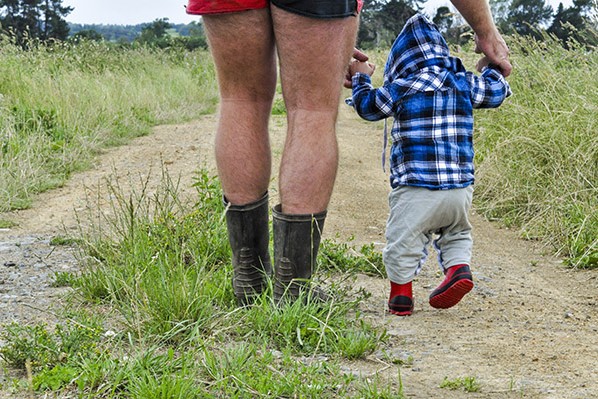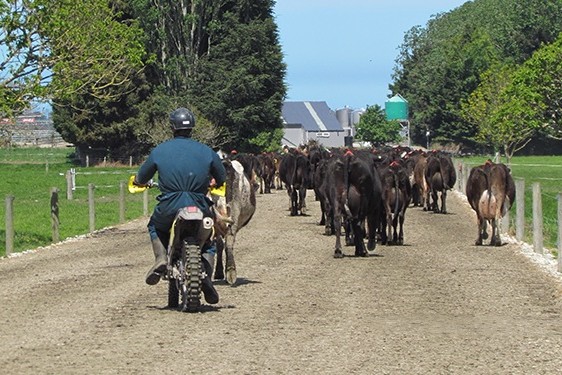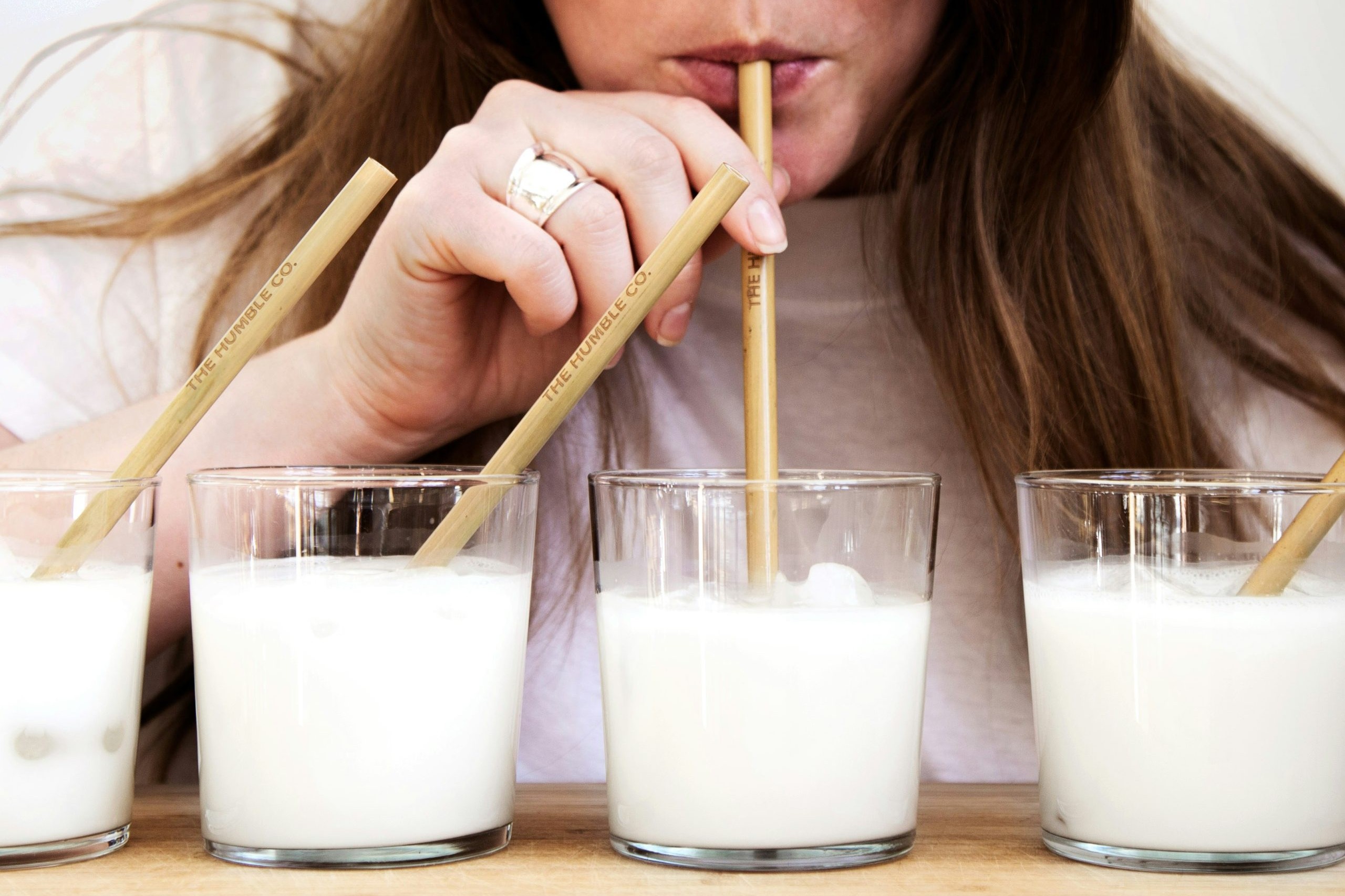Lincoln University Dairy Farm’s switch to 10-in-7 milking means fewer staff and a better work/life balance. Anne Lee reports.
 In the 2020/21 season Lincoln University Dairy Farm (LUDF) operated with four full-time staff and ran an eight-on two-off, eight-on three-off roster.
In the 2020/21 season Lincoln University Dairy Farm (LUDF) operated with four full-time staff and ran an eight-on two-off, eight-on three-off roster.
This past season the farm’s had just three staff and has run a five-on two-off roster with staff working 38-45 hour weeks for most of the year.
The difference – a 10-in-7 milking regime.
That’s 10 milkings in seven days rather than the traditional twice-a-day (2AD) milking.
For LUDF it means once-a-day (OAD) milking at the weekends as well as Tuesday and Thursday with 2AD milkings on Monday, Wednesday and Friday.
The benefits of using the regime on the farm this year have been greatest by far for the team.
They shared their thoughts on the system in a webinar hosted on LUDF’s FaceBook page and website with the farm’s manager also giving an overview of how it all went at the farm’s latest focus day held in May. LUDF 2IC Cody Mulligan says at his previous job he worked 12-on and two-off – he has two young children.
That kind of roster coupled with the hours he’s worked in the past were tough on family life.
“This is better on the body and the mind,” he says.
His two days off, in LUDF’s five-on two-off roster, are Sunday and Monday.
“I get to pick up the kids from school and go to after-school sports.”
The milking regime means he gets more sleep and it reduces fatigue.
For any farm teams considering doing 10-in-7 after Christmas he says the benefits include allowing people to get away for their annual leave.
“This year was the first time I’ve been able to take two weeks off in a row,” he says.
It’s also meant that when farm manager Peter Hancox is away, Cody has more time to plan and prepare or carry out maintenance.
Georgia Berg has worked on farms with typical 2AD milking programmes and worked rosters such as 11-on three-off and nine-on three-off.
LUDF’s system is hugely different, she says, and so much better for well-being.
It’s meant you’re more rested and that makes you more productive, allowing you to get more done in the fewer hours you’re at work, she says.
Being fresher means being more alert and instead of just trying to get through milking it means you can be more engaged – picking up cows sooner where something’s amiss, for instance.
It also means that instead of just working and sleeping on your days on you have energy to do other things – even mundane chores like cleaning the house or doing the washing, that would otherwise have to wait till your days off. That way when your two days off come you can actually have days off to do what you want to.
Peter says it was the people not the cows who had to adapt the most at the start of the season and it took a bit of time to get into a good routine.
“We had to get our heads around how to manage our day.
“When you’re milking 2AD you milk in the dark in the morning and then have the daylight and time till the next milking to get things done.
“On our OAD days we have cups on at 9.30 in the morning so we had to adjust how we worked around that.
“At the start of the season there was just Cody and me with casuals, our heifers had come home early and it was a wet start to the season.
“We have three of us full-time now and now we’ve worked out good routines, I think this coming spring should be easier,” he says.
Because of the varying morning milking times – 5.00am, 9.30am, 8.00am and 11am, they decided to make their set calf feeding time about 10.30 or 11am.
It meant buying milk warmers to keep the early morning milk warm for the late-morning feed.
They found cows took longer to milk at the 5.00am Monday morning milking because the long milking interval of 21.5 hours meant cows were full of milk.
There were also some issues in spring keeping cups on cows where udders were full and tight with the longer milking intervals – particularly heifers.
“We needed to have people in the shed dealing with that for a while – but it came right.”
Cows were keen to get to milking so cow flow was great and further time savings came from using a Batt- Latch on gates earlier in the season to automatically let cows out of the paddock before milkings.
It meant the team could turn up to the farm dairy and the cows were there waiting for them.
Initially they saw a lower incidence of lameness with cows doing less walking, also saving time treating or managing animals. Peter says OAD over the weekends had a positive effect on the team, especially over the busy spring period. The regime meant hours worked were kept down to about 50 hours a week through the peak spring period and Peter expects pressure will be less this coming spring.
The varying morning milking times didn’t cause problems for staff or the AI technician over mating with arrangements made early for the AI tech to come to LUDF at the start of their run on the 2AD milking days and at the end of their run on other days.
The expected benefits for the cows though didn’t shine through the whole season, likely due to the dampening seasonal effects of a wet spring and then a wet December.
Cow condition did hang on longer after calving but the lack of growth and energy in the pasture became a factor as they went into mating.
He had hoped to see benefits in a lower incidence of lameness and mastitis along with improvements in reproductive performance with less walking for cows allowing for improved body condition.
But they didn’t tick those boxes and Peter says he’s “pretty gutted about that”.
December brought 80mm of rain and the incidence of lameness spiked even though cows were walking less. It may have been worse under a TAD system.
The incidence of mastitis was also higher this year than previous years adding to workload.
Peter says they didn’t alter grazing management markedly with cows still offered 24-hour breaks.
“If we were allocating feed based on the time between milkings we’d have bits and pieces left in paddocks,” he says.
That would have meant more frequent shifting of cows and complicated the system.
Breaks were shifted about 4.30pm each day but one significant change to previous years is that the new paddock wasn’t necessarily the one with the highest cover.
“One of the big benefits of 10-in-7 is less walking for the cows so if the next paddock on the feed wedge (next highest cover) was further away than the second highest one we’d go to the second one.
“It’s all done within reason so if there was only one or two paddocks difference, we’d stick to the highest.”
Fewer milkings doesn’t mean feeding the cows less though, and it’s important that cows are still fed well if a drop in milk production due to fewer milkings is to be minimised.The farm finished the season about 8% down on production with about 3% of that likely from seasonal effects.
Anecdotally milk production in Canterbury has been back by 3-4%.
In addition, DairyNZ studies have found farmers shifting to 10-in-7 for the whole season might expect a drop in production of about 5%.
To watch more





